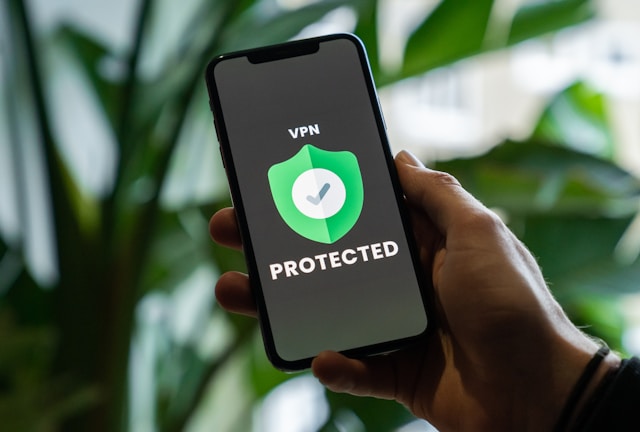Discover what geofencing in cars is all about to understand the technology better. We’ll share how vehicle tracking systems can use the technology to improve the effectiveness of their approach.
Furthermore, you’ll learn about the different trigger types that you can use for geofence alert in cars. Take the time to familiarize yourself with what they are so you can begin to implement the technology in your fleet management.
Keep reading to learn more about how car geotargeting opens up a wide range of use cases!

Table of Contents
Geofencing in Cars: What Is It?
Geofencing in cars is a technology that uses GPS or RFID to create virtual geographic boundaries. When a vehicle enters or exits these predefined zones, the system can trigger alerts.
Furthermore, geofencing in cars is commonly used for fleet management, parental controls, and theft prevention.
For instance, parents can set boundaries around school zones or home areas to monitor teen drivers. In comparison, companies can track and manage delivery vehicles within specified routes.
Additionally, car geofence can restrict certain vehicle functions in designated areas to enhance safety. As connected cars and autonomous vehicles become more prevalent, geofencing will play a crucial role in traffic management and urban planning.

7 Different Types of Geofence Alert in Cars
Now let’s focus on the different types of geofence alerts in cars you may come across. This will give you an idea of the different use cases of the technology. Also, you can better imagine how you may want to use geofencing in your own digital infrastructure.
Keep reading for the different geofencing technology types in cars.
1. Entry Alert
This refers to triggers when a vehicle enters a specified area. Overall, it’s useful for tracking arrivals, such as deliveries, employees reaching job sites, or children arriving home.
It ensures the vehicle is where it’s supposed to be and can notify the owner or fleet manager instantly. In commercial settings, it goes a long way toward enhancing security and operational efficiency.
2. Exit Alert
The exit alert triggers when a vehicle exits a predefined area. This is ideal for monitoring unauthorized departures from secure zones or ensuring vehicles remain within designated areas.
It’s commonly used for theft prevention, fleet management, or monitoring teenagers driving beyond permitted boundaries.
3. Time-Based Geofence Alert
This type of trigger activates when a vehicle enters or exits a geofenced area during specific times. It’s beneficial for enforcing curfews, monitoring vehicles after work hours, or ensuring deliveries happen within scheduled times.
Furthermore, this alert helps in maintaining control over vehicle activity according to set schedules.

4. Speed-Based Geofence Alert
You can use this type of trigger when a vehicle exceeds a set speed limit within a geofenced area. It’s useful for enforcing speed regulations in specific zones like school areas, neighborhoods, or construction sites.
Additionally, the alert enhances safety by ensuring speed limits are adhered to in sensitive or high-risk locations. City planners can carefully consider the right speed limits in each area to provide the right balance of speed and safety.
5. Duration-Based Geofence Alert
These triggers are for when a vehicle stays inside or outside a geofence for longer than a specified time. It’s a good idea for preventing unauthorized stops, monitoring delivery efficiency, or tracking idling.
6. Proximity Alert
Triggers when a vehicle approaches within a set distance of a geofenced location without crossing the boundary. You’ll find that this trigger is useful for notifying when a vehicle is near a destination. This might be a service center or a customer’s location without necessarily entering the geofence.
7. Journey Geofence Alert
The journey geofence alert triggers if a vehicle deviates from or follows a predefined route within a geofenced area. The top use cases include monitoring delivery routes, school bus paths, or service routes.
This ensures vehicles stick to planned routes to improve compliance and reduce the risk of unauthorized detours.

Frequently Asked Questions
Here are the top frequently asked questions to give you a better understanding of geofencing in cars.
What is geofence alert in a car?
A geofence alert in a car is a notification triggered when the vehicle enters or exits a predefined virtual boundary. You can use it for monitoring vehicle movement, improving security, and ensuring compliance with set boundaries.
The technology is Common in fleet management and personal vehicle tracking. It can provide real-time alerts for various conditions. This includes unauthorized movements, speed limits, or specific time-based rules.
What Is geofencing in cars?
Geofencing in cars involves setting up virtual boundaries on a map that trigger alerts when the vehicle crosses them. You can use this technology to monitor and control vehicle movement, enhance security, and improve operational efficiency.
How does geofencing work in cars?
Geofencing works by defining geographic boundaries using GPS. When a vehicle equipped with geofencing technology crosses these boundaries, it sends an alert to the vehicle owner or fleet manager.
The system can monitor entry, exit, speed, and time spent within the geofence. This is useful for a wide range of use cases. The top one includes managing routes, enforcing rules, and ensuring vehicle security.
What are the benefits of geofencing in cars?
The benefits of geofencing include improved vehicle security, efficient fleet management, and enhanced driver behavior monitoring. However, there are many more benefits based on the reason you want to use the technology.
Overall, it helps track vehicle locations, prevent unauthorized use, enforce compliance with routes or schedules, and respond to security breaches. Furthermore, businesses can optimize operations in major cities by creating invisible barriers for different uses.
Can you customize geofencing in cars?
Yes, you can customize geofencing in cars. Users can set specific geofence boundaries, determine trigger conditions like speed or time, and choose how alerts are delivered.
This flexibility makes geofencing adaptable for various needs. It includes monitoring a fleet, ensuring a vehicle stays within a safe area, or tracking compliance with set routes.

Use Geofencing To Boost Your Car Tracking Systems
Geofencing in cars is a common occurrence nowadays because there are many excellent use cases. This can boost performance and lead to business growth, depending on the implementation of the technology.
Furthermore, when using geofencing in cars, you need to apply the right trigger types. The various types of triggers mentioned in this article are a good starting point to select the right one. Take the time to understand what each one does and choose accordingly.
Do you want to take advantage of car geofencing data for marketing? Then use geoPlugin for a tool that converts IP addresses into actionable geolocation data. We have a long list of satisfied customers, and you can be the next one.
So what are you waiting for? Give geoPlugin a try today for accurate geolocation data!











